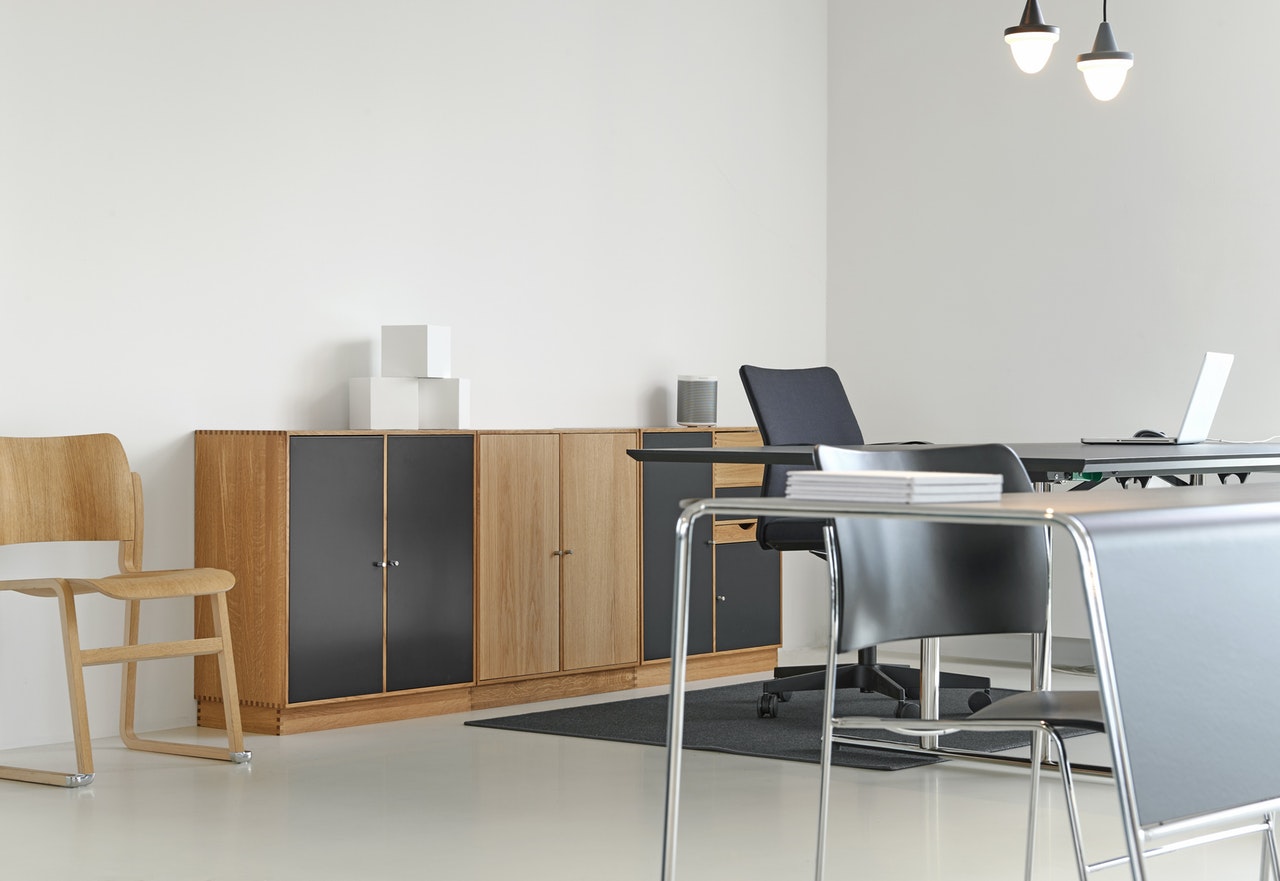Warp It are really excited to welcome Neil Duncan, the Waste Management Officer at NHS Grampian in Scotland. Neil has been leading a really great project, and he’s also the man in charge of Warp It on the estate, so we called him up to discuss the following things:
- How transport difficulties can hold you back
- Why the logical argument is often the best argument
- How making savings could allow your department to expand
- How communications can help growth

Hey Neil, can you tell us what is encompassed in your role as Waste Management Officer?
I cover all matters of waste, from general waste recycling up to clinical waste, and also anything that needs to be disposed of comes under my remit.

Savings as of 12 months after project start. To see up to date savings click here.
I used to be a Waste Manager within a university, so I understand this quite well. What I’d like to understand though is what you were doing before Warp It, and why you moved over to our service?
Well, I'm relatively new to the NHS, it’s just over 2 years that I've been in the post. It seemed that the standard procedure for the NHS was ‘Everything goes in the skip’. As soon as somebody didn't need something, it just got disposed of. There was no thought to reusing it or saving it or anything like that. So, when I first started my job, I thought, "I need to try and do something about this."
Why do you think that happened within your organisation?
There was no Waste Manager for a few years before I started and so it's probably just a historic issue. A lot of things that happen in the NHS happen because they've always happened that way. "This is what we do". So the mentality has been "Just get rid of it" and not really give it a second thought. To a certain extent it's still the case, but I’m working hard to get people away from that mindset.
So, once you saw the problem, how did you start tackling it?
Well, I'm a kind of one man show here, so my priority was to get people recycling, because there wasn't really any recycling, or very few places had it, so I was trying to concentrate on implementing that. It also goes hand in hand with reuse. You can encourage reuse through general recycling, one leads to another, and when you start looking at bigger items needing to be recycled or reused, that's when you can start visualising the process. Then I was introduced to Warp It by Wendy Rayner, sustainability manager and facilities directorate at NHS Services Scotland.
So you saw the need for recycling and reuse, but how did you take recycling and Warp It to the senior managers and get their approval?
With great difficulty really. The recycling side of it was fairly standard, but not simple by any means. It had to be done though, and everybody knew it had to be done. So it was just a case of getting bins in the right places and creating awareness. The majority of folk will recycle and reuse at home anyway, it's just when they come to work, everybody seems to forget they're supposed to do it. Because we already had recycling targets, and we should have been recycling to the the Waste Scotland regulations, that was an easy target and there was nobody that could say "Why are you doing this?”.
The reuse side of it was different altogether. It was a different step. When I first wanted to start rolling it out I spoke to my manager, who then spoke to his manager and it went up the chain. I spoke to our Head of Procurement, Head of Facilities and Estates, who, they themselves I'm led to believe took it up with the Chief Exec who was in support of it as well. So after that it was just a case of getting it up and running and seeing how well it was going to work.
I had full support from the Head of Transport and Head of Portering too, and since they’re the staff that are involved with moving stuff about, that was great. They thought it was a great idea, as did Health and Safety, so then it was just a case of getting it up and running.
That’s great to hear there was so much support, but was there any pushback?
No, I think because everyone knew we should be doing it. Everybody knew it should've been happening years ago, and everybody knew there's a hell of a waste in the NHS, all of NHS, I'm sure. So everybody was fully supportive of it to begin with. But, I was checking dates, it was September 2015 when I first set up at NHS Grampian. But it was March, six months later, before I actually got around to actually getting it going. Generally things don’t happen too fast in the NHS.

It happens eventually though. So, once it was up and running, with full senior backing, how did you roll it out and get interest?
We've got global emails, so I wrote up an article for our global email and that went out to everybody with an NHS Grampian email address. And we've got Upfront magazine, a staff newspaper as it were. The Corporate Communications team who do that, when they heard about it they were fully supportive as well, they thought it was a good idea, so they've been helpful, they've written a couple of articles now. That's how it started, that's how we got the message out to begin with.
And did you have any problems rolling it out?
I can’t remember there being any negativity. The biggest issue we've got is actually transporting bigger items. While Transport and Portering are really fully in support of the scheme, Transport in particular, they work with just one member of staff in a van. So everything has to be moveable by one person. When you've got larger items like desks, they can become an issue. If there are lots of desks needing to be moved about, and filing cabinets, but there's only one man and they can’t move it, then it just tends not to move at all. Or, if something is big and it’s not on wheels, it has to be broken down and put into an NHS cage so that it can be moved. That’s really the biggest stumbling block to success.
At the end of the year when you report on your achievements, will you be able to look at the savings figures and take them to senior management to try and get the investment for another team member?
That'd be a great idea, that's the way to go certainly. I was just looking at figures before you phoned, it’s £36,000 saved in little over a year. So that more than pays for a member of staff in theory, and we could do a lot more if we had an additional person.
I think it’s something to consider for the future, definitely. It’s important for our readers to know your circumstances too, do you have storage facilities?
That's another headache. There is no storage, nowhere to really store furniture. It’s frustrating too because a few older sites have closed recently, so there’s furniture in them that's good to be used elsewhere. But if they’re shut and there's no staff on site, then there's nobody really to take responsibility, other than myself, to go to the site, photograph it all and put it on WARPit.
But then maybe somebody claims it. It's only myself that’s going back out to the site to try to get Transport to pick it up. If we had somewhere to store furniture then it would be a lot easier. We could arrange to get it all taken to one place and then divided up from there, but we just don't have that facility.
I can help you make a business case for storage, don’t let it stress you too much. Moving forward, we’re coming towards the end of this interview now, I’d like to know what advice you would give to others who might be struggling to get their reuse project taken on board.
I think having a great partnership with the transport department is very important, but also being aware of their resources and limitations. We need to address the fact there’s only one man and one van at the moment. What’s holding us back is the inability to move large pieces of furniture around. Use your communications team as much as you can, but also encourage word of mouth to spread.
How do you see your reuse programme growing in the next six to twelve months?
If I could get Transport to have additional staff, so that we could move bigger piece of furniture from Warp It, then we could almost have a relaunch and say "Right, now we can move anything that you've got".
Thanks to Neil Duncan for his time and insight about the recycling and reuse developments at NHS Grampian in Scotland. What we’ve learned from this interview is that physically moving furniture can be a huge blockade in the whole process. How frustrating it must be to photograph, list, wait, and deal with a claim for an item, only to find out that it’s too big to be moved. On the other hand, the organisation were willing to start small and work their way up, a natural progression if you like, and this is a sensible way to do things, rather than throwing loads of resources at a project and simply expecting results. There’s a lot to be learned from this approach. Thanks again Neil.









